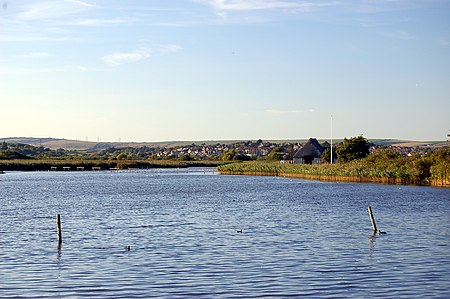Radipole Lake
Dorset geography stubsGeography of Weymouth, DorsetLakes of DorsetNature centres in EnglandNature reserves in Dorset ... and 4 more
Royal Society for the Protection of Birds reserves in EnglandSites of Special Scientific Interest in DorsetTourist attractions in Weymouth, DorsetUse British English from February 2018

Radipole Lake is a lake on the River Wey, now in the English coastal town of Weymouth, Dorset, once in Radipole, the village and parish of the same name. Along the western shore of the lake, and between Radipole and the town centre of Weymouth, now lies the modern suburb of Southill. The lake is a nature reserve run by the Royal Society for the Protection of Birds, as it is an important habitat for reedbed birds. The Wild Weymouth Discovery Centre at Radipole Lake features nature and bird exhibits and programs, trails and viewing blinds. The lake flows into Weymouth Harbour.
Excerpt from the Wikipedia article Radipole Lake (License: CC BY-SA 3.0, Authors, Images).Radipole Lake
Grasmere Road,
Geographical coordinates (GPS) Address Nearby Places Show on map
Geographical coordinates (GPS)
| Latitude | Longitude |
|---|---|
| N 50.625277777778 ° | E -2.4669444444444 ° |
Address
Grasmere Road
Grasmere Road
DT3 5HB , Radipole
England, United Kingdom
Open on Google Maps









